🏳️⚧️ Fair Game? Trans Participation in Sport
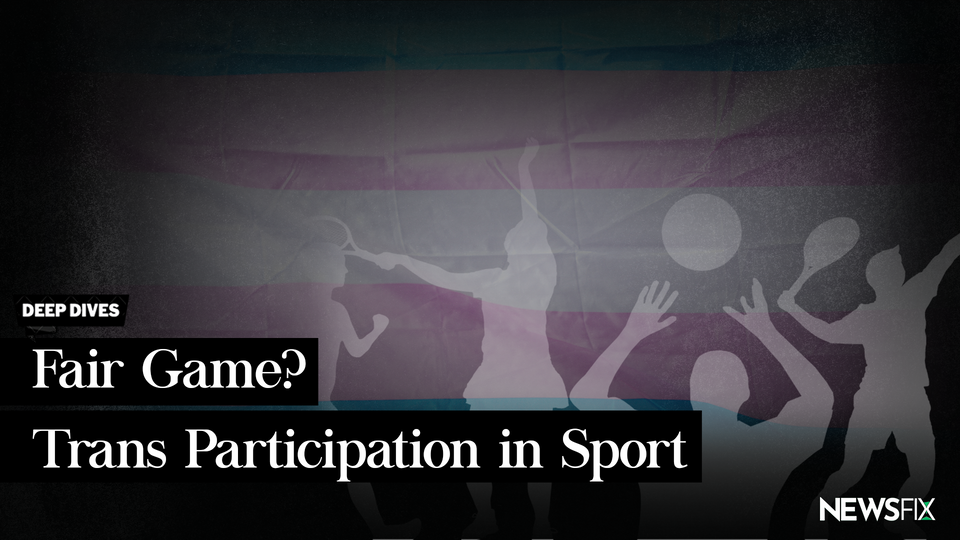
Morning all,
Last week, Florida's Governor refused to recognise a trans woman's victory in what BBC News described as "the highest US national college swimming title".
The topic of trans participation in sport is becoming as political as it is polarising. While some celebrated the victory of Lia Thomas as a milestone in the fight for equality, others were concerned about potential implications for the integrity of women's sport.
Whatever your stance - we felt most of us could benefit from knowing a bit more about this subject.
Until Monday,
Your Fixers
THE BASICS
The word “trans” is short for transgender, and is a general term, meaning someone who has a different gender identity than the one assigned to them at birth.
For example, a trans man is someone that transitioned from a woman to a man. Trans people sometimes choose to take hormones or undergo surgery to alter their physical features, and sometimes do not.
Meanwhile, sex refers to the biological aspect of the human body - what was assigned at birth according to genitalia; male, or female. Gender identity is about how someone identifies, which could be different than the sex they were assigned at birth.
Transitioning is the process of becoming the gender you feel on the inside. It includes any steps taken to express your gender identity - like changing your pronouns - and can also involve a range of social, medical, legal and administrative changes.
DISCRIMINATION
It is worth noting here that while this piece is specifically about sport, data consistently shows trans people face startling levels of abuse and inequality in their every day lives.
For example, research conducted in 2018 by Stonewall found;
- Two in five trans people had experienced a hate crime or incident because of their gender identity
- Two in five trans young people had attempted suicide
- One in eight trans people had been physically attacked by colleagues or customers at work.
HOW MANY TRANS PEOPLE ARE THERE?
No one knows exactly how many people are trans - and estimates can vary widely. The UK government “tentatively” estimates that there are 200,000 - 500,000 trans people living in Britain.
According to Stonewall, an LGBTQ+ rights charity, around 1% of people might identify as trans. In terms of the UK, this would mean there may be more than 670,000 transgender individuals.
TRANSGENDER ATHLETES
Given how large the trans community is, it is not surprising that transgender athletes have almost certainly competed in sports for centuries.
However, the history of elite trans athletes began with Renée Richards in the 1970s - who has since been described as a “transgender pioneer”.
RENÉE RICHARDS
Richards was a professional tennis player in the US who transitioned to female.
Born in 1934 as Richard Raskind - she later changed her name to Renée, a name which means reborn in French. As Renée, she wanted to continue with her tennis career - but playing against fellow women.
"I had a very good and a very full life as Richard. But I had this other side of me which kept emerging… I kept pushing back until finally it was not possible to submerge Renée anymore - and Renée won out.” - Richards, 2015
However, when Renée attempted to play in the US Open - she was denied entry.
Richards challenged the decision - and the New York Supreme Court ruled in her favour. The presiding judge was persuaded that her muscle development, weight, height and physique “fit within the female form”.
The case was viewed as a landmark moment for trans rights - and in her career as a women’s tennis player, she went on to be ranked as high as 20th. Richards also won the 35-and-over women’s singles at the 1977 US Open.
MIXED REACTION
The reaction to Richards competing - and winning - was mixed. The sport was described as split into two camps - “rejection and a fear she would dominate the game, or acceptance and a show of empathy”.
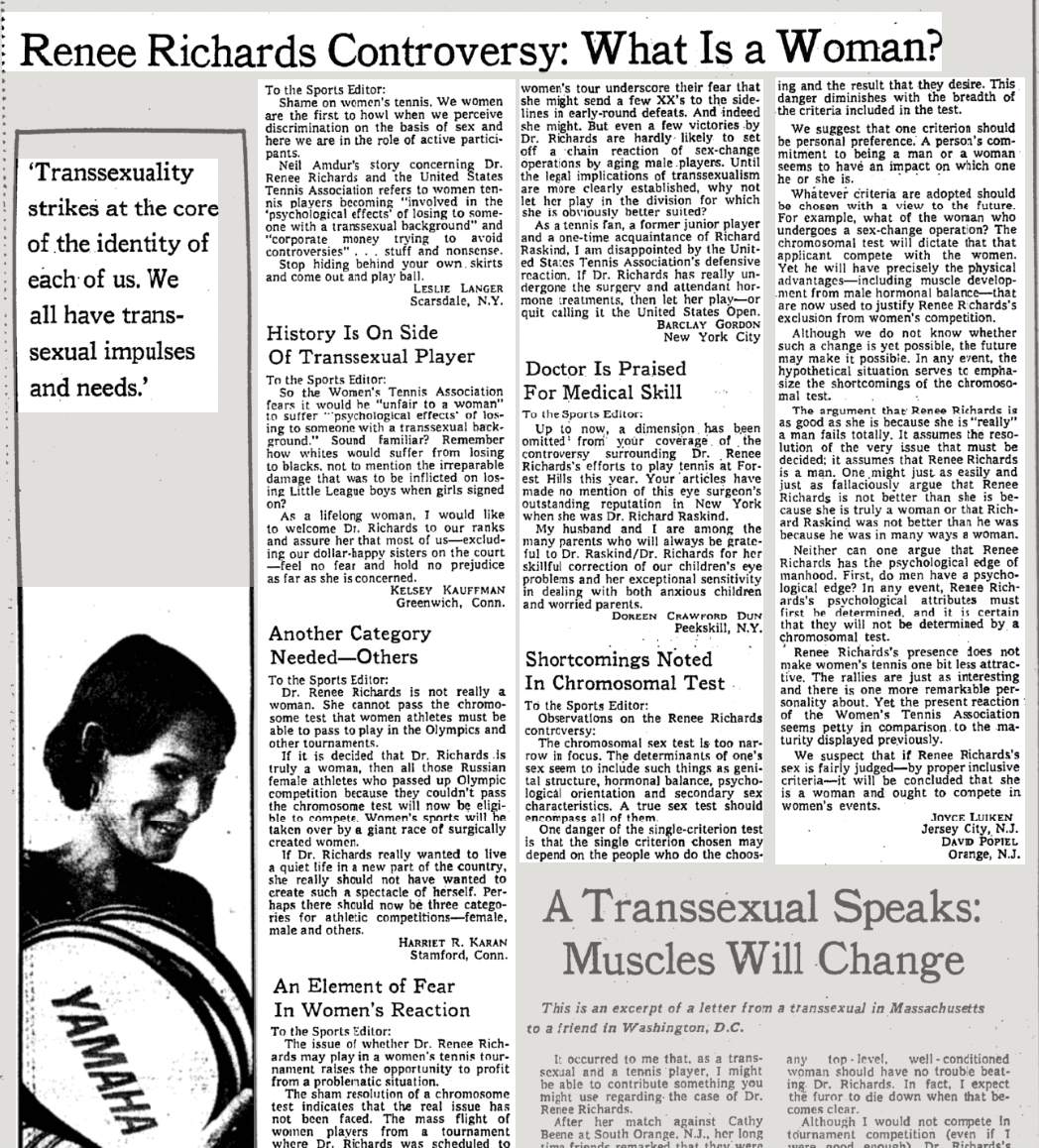
In many ways this is similar to the experience of trans athletes today, who do receive support - but concerns over the impact of their participation on women’s sport remain.
Interestingly, Richards herself has expressed mixed feelings about her own legacy.
While she takes pride being “the first one who stood up for the rights of transsexuals”, she also stated she thinks "transsexuals have every right to play, but maybe not at the professional level, because it’s not a level playing field.”
FAIR GAME?
The main reason some argue that transgender athletes could have an unfair physical advantage is because higher testosterone levels means that biological males naturally have more muscle, less body fat, larger lungs, larger hearts, longer legs and narrower hips. All of which can give them an advantage in competition.
Biological males also have more haemoglobin, which is a protein in red blood cells that transports oxygen to the body’s tissues, and which allows them to compete for longer.
When it comes to sporting integrity, the concern is that these attributes can remain in trans female athletes after they have transitioned - and are life-long advantages when it comes to speed and strength.
Below is a diagram showing the percentage of a male athlete’s athletic advantage over a female’s, depending on the sport. It also breaks down various track and field events and shows that 14-15 year old schoolboys have achieved higher records than elite female athletes.
FALLON FOX
A retired MMA (mixed martial arts) fighter named Fallon Fox is cited as an example when concern over sporting integrity are levelled.
Fox entered competitions as a female and the fact she is transgender only became public after she won a fight in 2013 with ease - knocking her opponent out in 39 seconds.
She was reportedly “heartbroken” news of her sexual reassignment went public, and she described the “scope of vitriol and anger” as “mind-blowing”.
The fighter stated “I'm technically, legally, physically and mentally female” - and under the rules of organisations like the International Olympic Committee (IOC), she was eligible to compete.
But, what are these rules?
WHAT ARE THE RULES?
The International Olympic Committee (IOC) agreed to rules in 2003 known as the Stockholm consensus.
Under this, transgender men and women were allowed to compete in the Olympic games as long as they checked off all items on the following list;
- They must have had “surgical anatomical changes” (including having their testes or ovaries removed)
- They must have obtained legal recognition of their assigned sex
- They must have undergone hormone therapy for sufficient time to "minimise gender-related advantages." Her testosterone level must stay below 10 nanomoles per litre and have been that way at least 12 months before competing.

Under these rules, US trans male athlete Keelin Godsey competed in trials for hammer throw in both 2008 and 2012 - but narrowly missed qualifying for the US Olympics team both times.
This is an interesting caveat to the controversy surrounding Fallon Fox in the MMA - and highlights that trans athletes can also be out-performed by cisgender competition.
2016 CHANGES
The IOC rules were updated in 2016 - meaning female-to-male trans athletes can take part in the Olympics “without restriction”. That is, without any surgical changes.
Meanwhile, male-to-female trans athletes would be allowed to compete if their testosterone level has been below a certain cutoff point for at least one year before competing.
In a statement, the IOC said the changes were “necessary to ensure insofar as possible that trans athletes are not excluded from the opportunity to participate in sporting competition”.
CRITICISM
Those rule changes have been criticised by Sharron Davies - a former Olympic swimmer for Great Britain.
“You're not going to be able to get rid of the male puberty that they’ve gone through - the fact that they've got male biology. So even by reducing testosterone for one year, it’s still not going to level the playing field… “I just think there's ways forward that doesn't mean the destruction of female sport”. - Sharon Davies
However, Davies has been labelled a “transphobe” by track cyclist Rachel McKinnon - a high-profile trans athlete, who won the world championship in 2018.
McKinnon believes the debate is one of equality and human rights - and to be considered equal members of society, people must be included in sport for who they are. She also argues that if testosterone is an advantage - that is the reality of sport.
“Athletes come in a huge range of shapes and sizes, and natural abilities. Population demographics around the world are different. So Dutch women average height is over 5 foot 6. Indonesian women are around 4 foot 10. So, sport is never level. If by which we mean no one has a competitive advantage over each other, because that’s the point of sport.” - Rachel McKinnon
The piece by The Economist 👇🏽 was published in 2019, but makes for a really interesting watch.
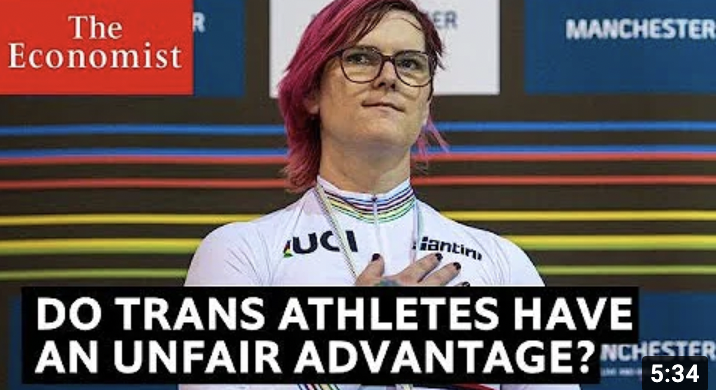
CAITLYN JENNER
Perhaps one of the most prominent voices on this topic is Caitlyn Jenner.
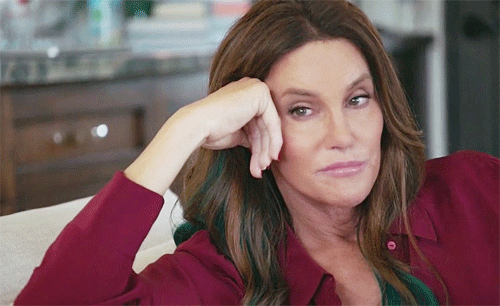
Before her transition, Caitlyn Jenner won the Decathlon Gold medal in 1976 as Bruce Jenner. In 2015, she came out as transgender and was a major advocate for trans rights in sports.
When Jenner received the Arthur Ashe Courage Award at the ESPY Awards, she mentioned trans participation in sport in her acceptance speech.
“I also want to acknowledge all the young trans athletes who are out there — given the chance to play sports as who they really are [and] we have come a long way. But we have a lot of work to do.” - Caitlyn Jenner
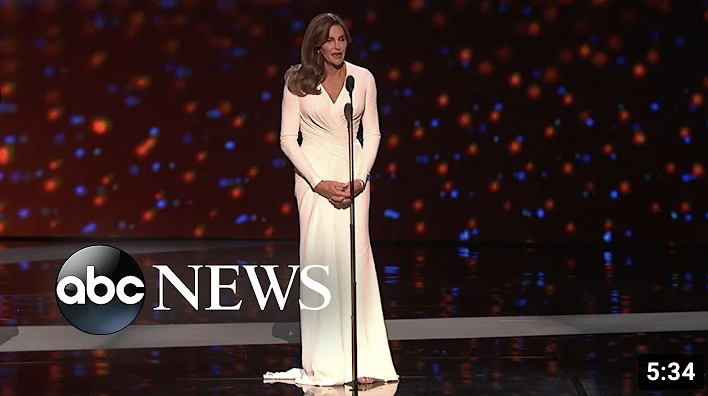
In 2021, however, she expressed a significant change in stance - while running as a Republican for Governor of California.
At that point, Jenner said that she opposed “biological boys who are trans competing in girls' sports in school", adding "it just isn't fair... we have to protect girls' sport in our schools".
It resulted in much backlash - with Equality California, an LGBTQ+ advocacy organisation, writing: "Here are the facts: Caitlyn Jenner is willing to sacrifice the health & well-being of trans kids to win votes”.
TESTOSTERONE
But when it comes to the supposed athletic advantage of trans female athletes - which Sharron Davies and Caitlyn Jenner refer to - is the science clear? Some argue it is not.
“Studies of testosterone levels in athletes do not show any clear, consistent relationship between testosterone and athletic performance”. - Katrina Karkazis, an expert on testosterone and bioethics at Yale University
The rules on testosterone can also have implications for female athletes with naturally high levels of the hormone.
For example, Caster Semenya - a South African Olympic runner. She was born as and identifies as a female - but has naturally high levels of testosterone. Due to this, she was unable to defend her 800m Olympic title at Tokyo 2020 due to rules on testosterone.
THE TOKYO OLYMPICS
The Tokyo Games were, however, a landmark moment for the inclusion of transgender athletes - due to the new rules, which made it easier for transgender women to compete.
In total, three athletes known as being transgender competed. They were;
- Laurel Hubbard - New Zealand weightlifter
- Quinn - Canadian women's soccer player
- Chelsea Wolfe - United States BMX alternate
Of those athletes, Quinn - an openly trans and non-binary athlete - was the only one to take home a medal. The Canadian soccer team they were part of won gold.
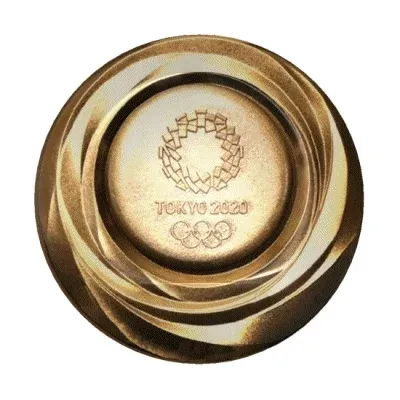
“I feel proud seeing 'Quinn' up on the lineup and on my accreditation… I feel sad knowing there were Olympians before me unable to live their truth because of the world. I feel optimistic for change. Change in legislature. Changes in rules, structures, and mindsets”. - Quinn, reacting to the victory
LIA THOMAS
Fast forward to March 2022, and the subject of trans athletes was dominating the headlines. University of Pennsylvania’s Lia Thomas made history as the first known transgender athlete to win an NCAA swimming championship.
According to The Guardian, Thomas swam as a male competitor for the first three years in university. While swimming in male competitions, Thomas made "six Ivy League swimming finals, though not setting the world alight".
Perhaps as has come to be expected, the reaction was mixed.
“The integrity of women’s sport – if we don’t get this right – and actually the future of women’s sport, is very fragile…gender cannot trump biology”. - Sebastian Coe, the World Athletics president
Going further, Irish former track and field athlete Sonia O’Sullivan called for a ban on transgender athletes competing altogether, saying they "cannot be allowed into women's events" and "we need to be certain about this".
"Women’s sport exists in order to allow women compete on a level playing field against other biological born women; it is not a category one can transfer into." - Sonia O'Sullivan, in a recent piece she wrote for The Irish Times
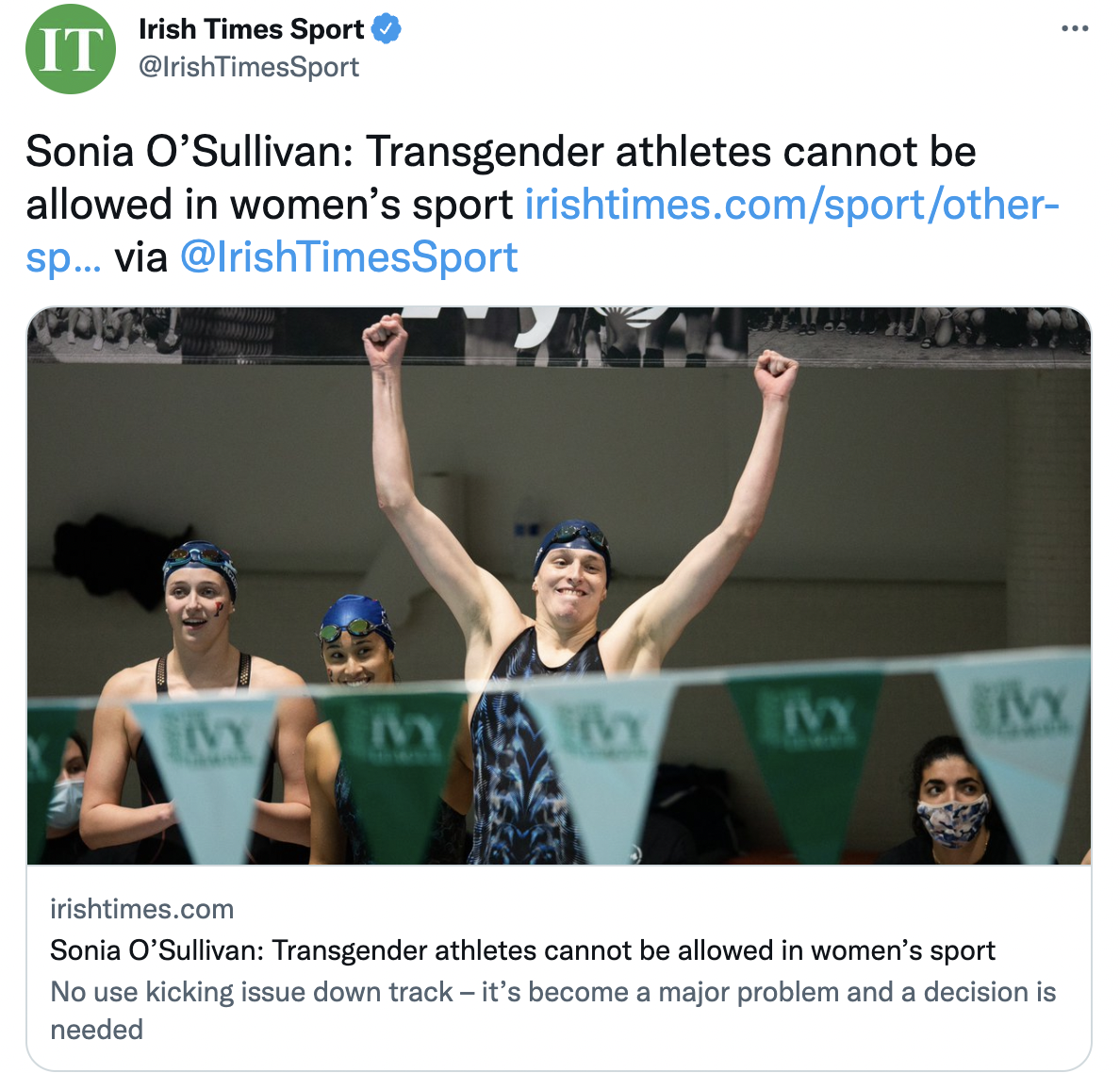
Meanwhile, Erica Sullivan, the swimmer who finished third behind Thomas, shared a very different view on the matter.
“As a woman in sports, I can tell you that I know what the real threats to women’s sports are: sexual abuse and harassment, unequal pay and resources and a lack of women in leadership. Transgender girls and women are nowhere on this list”. - Erica Sullivan
MOVING FORWARD
Clearly, there continues to be a great deal of division within the sporting community - and outside of it - regarding the most fair and inclusive route forward.
Regardless of your views on the matter, we hope you found this piece to be a helpful and informative read as these conversations continue.
